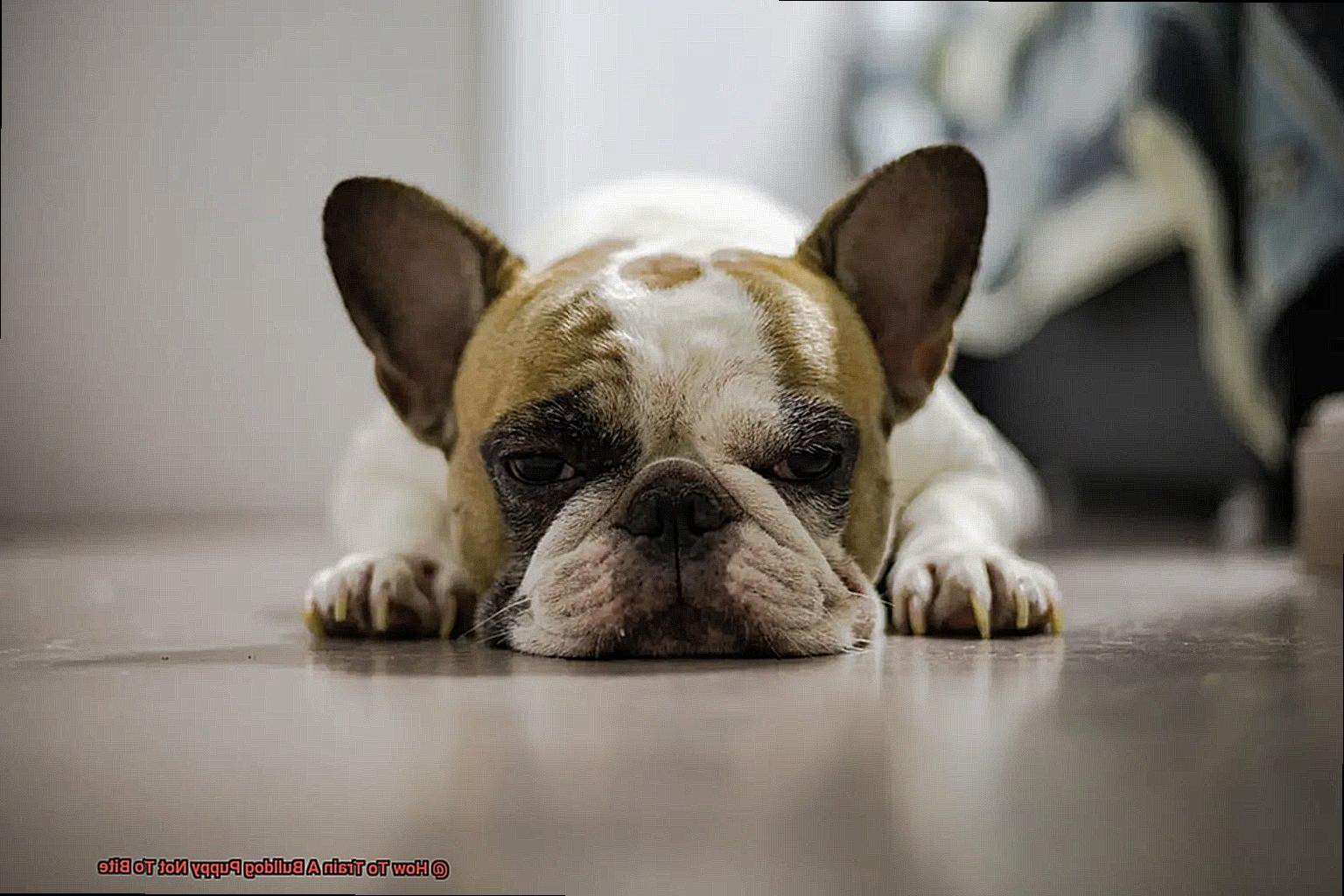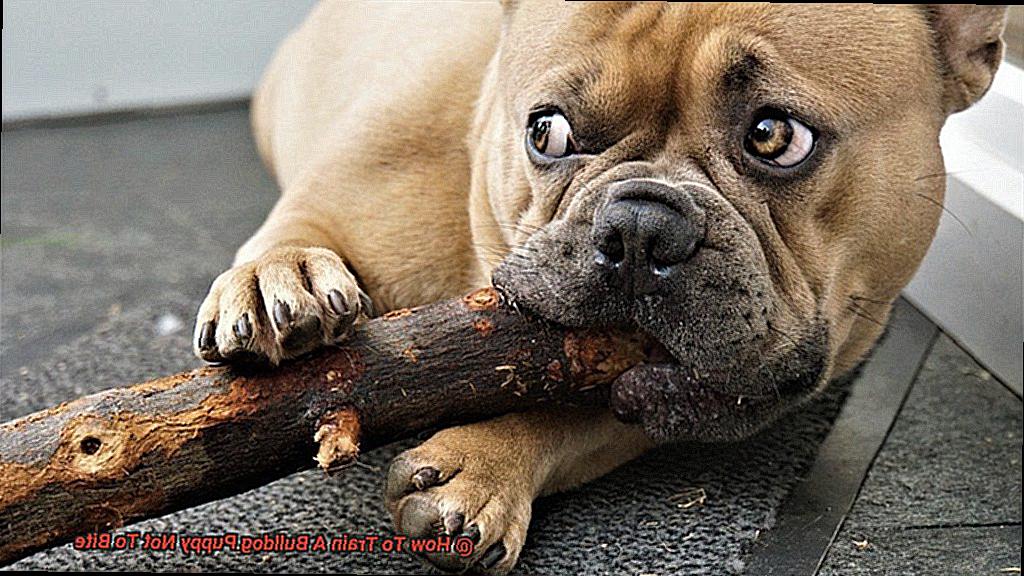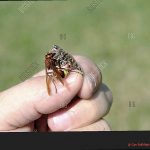How To Train A Bulldog Puppy Not To Bite?
Are you struggling with a bulldog puppy who loves to bite? Don’t worry; we have the perfect solution.
In this blog post, we’ll discuss the best ways to train your bulldog puppy not to bite.
You’ll learn how to use positive reinforcement techniques and understand why puppies bite in the first place.
So, let’s get started on training your pup not to bite.
Understanding Why Bulldog Puppies Bite
Contents
- 1 Understanding Why Bulldog Puppies Bite
- 2 Establishing Rules and Boundaries
- 3 Positive Reinforcement Training Techniques
- 4 Teaching Commands to Stop Biting
- 5 Avoiding Unnecessary Roughness
- 6 Socializing Your Bulldog with Other Dogs and People
- 7 Knowing When to Seek Professional Help
- 8 Common Mistakes to Avoid when Training a Bulldog Puppy Not To Bite
- 9 Conclusion
Bulldog puppies are full of life and energy, but they can also be mischievous and bite when they don’t get the attention they need. Understanding why your Bulldog puppy is biting is essential to addressing the issue in an appropriate way.
Bulldog puppies may bite as a result of teething or exploring their environment, so it’s important to provide them with plenty of toys and activities to keep them entertained. They can also bite out of boredom, hunger, or a lack of exercise, so make sure your pup is getting enough playtime and physical activity each day.
In addition, socializing your Bulldog puppy is key to helping them develop communication skills that will reduce the chances of them biting out of fear or anxiety. Make sure your pup is getting enough social interaction with other animals and people so they can learn how to interact properly.

Finally, it’s important to be consistent when disciplining your Bulldog puppy so that they understand what behaviors are acceptable and which ones are not.
Establishing Rules and Boundaries
Training your Bulldog puppy can be an enjoyable experience, but it’s essential to establish rules and boundaries.
Setting expectations for acceptable behaviors is key to helping your pup understand what is expected of them.
Give them clear commands and reward them with positive reinforcement when they obey. You can also set boundaries by teaching your dog where it can and cannot go in the house, as well as which items are off-limits.
If your pup bites or chews on something they shouldn’t, use a firm “no” or “stop” to let them know that this behavior is not acceptable.
Positive Reinforcement Training Techniques
Positive reinforcement training is an effective and humane way to teach your bulldog puppy not to bite. This method rewards good behavior with treats, verbal praise, and petting, while avoiding negative habits such as biting.
When your puppy bites you, it’s essential to stay calm and use a firm voice to say “no.” This will let them know that biting is not allowed. Rather than people or furniture, provide them with toys or other objects they can safely chew on instead.
Teaching Commands to Stop Biting
Teaching your bulldog puppy to stop biting can be a daunting task. However, with the right commands and consistent practice, it is possible to successfully train them not to bite.
Start with basic commands such as “sit”, “stay” and “no”. Positive reinforcement is key when teaching these commands; reward your pup with treats or verbal praise when they follow the command.
Make sure to be consistent in your training and reward them each time they follow the instructions. If they do not follow the command, do not punish them but rather try to redirect their attention elsewhere.
Practicing these commands regularly will help your pup learn quickly and remember them long term.
Avoiding Unnecessary Roughness
Training a dog can be an incredibly rewarding experience, but it’s important to remember that dogs need consistent and gentle discipline.
Bulldog puppies, in particular, can be extra sensitive to rough handling, so it’s essential to avoid any unnecessary roughness when disciplining your pup.
If your puppy is exhibiting undesirable behavior, such as biting, try redirecting their attention to a toy or treat rather than punishing them.
Patience and consistency are key components of successful training methods. Always reward good behavior with positive reinforcement.
Yelling or physical punishment should be avoided at all costs, as this could cause fear and aggression in your puppy.
Socializing Your Bulldog with Other Dogs and People
Socializing your Bulldog with other dogs and people is an essential part of training.
It helps them become more confident and less aggressive, so it’s important to start socializing your pup as soon as possible, preferably before they are 8 weeks old.
Taking them to dog parks, puppy classes, or even a walk around the neighborhood can help them get used to being around different people and animals.
Make sure to give them lots of positive reinforcement when they interact with others in a positive way.
Always supervise their interactions and if they start to act aggressively, remove them from the situation immediately.
Socializing your Bulldog will ensure they become a happy, well-mannered member of the family.
Knowing When to Seek Professional Help
Aggression can manifest in many forms, such as growling, snarling, snapping, and biting. A professional trainer or animal behaviorist can help you identify the root cause of your pup’s aggression and provide guidance on how to address it.
They can also teach you how to properly train your bulldog puppy not to bite. In certain cases, they may even suggest using a muzzle or shock collar as a last resort.
So don’t hesitate – if your Bulldog puppy is exhibiting aggressive behaviors, please contact a professional for assistance today!
Common Mistakes to Avoid when Training a Bulldog Puppy Not To Bite
Training a bulldog puppy not to bite can be a challenging task, but it’s definitely possible with patience and perseverance. To help you out, here are some common mistakes to avoid when teaching your pup the right habits.
First of all, consistency is key. You must use the same commands and rewards each time your pup displays the desired behavior. In addition, positive reinforcement is essential. Reward your pup with treats and praise whenever they do something right.
On the other hand, yelling or punishing them will only make matters worse. Instead, redirect their attention to something else and reward them for good behavior.
Socialization is also important for your pup to learn how to interact with other dogs and people properly. Introduce them to new people, animals, and environments from an early age so they can learn how to behave in different situations.
Lastly, don’t forget to be patient. Training takes time, so don’t give up if it doesn’t happen right away.
Also Read: Do all English Bulldogs Have Underbites?
Conclusion
Training a bulldog puppy not to bite can be a challenge, but with patience and perseverance, it is achievable.
Start by understanding why your pup is biting in the first place. Establish rules and boundaries, use positive reinforcement strategies, teach commands to stop biting, avoid unnecessary roughness, socialize your bulldog with other dogs and people, and if needed, seek professional help.
When disciplining your pup, remember to remain patient and consistent so they understand what behaviors are acceptable and which ones are not.




